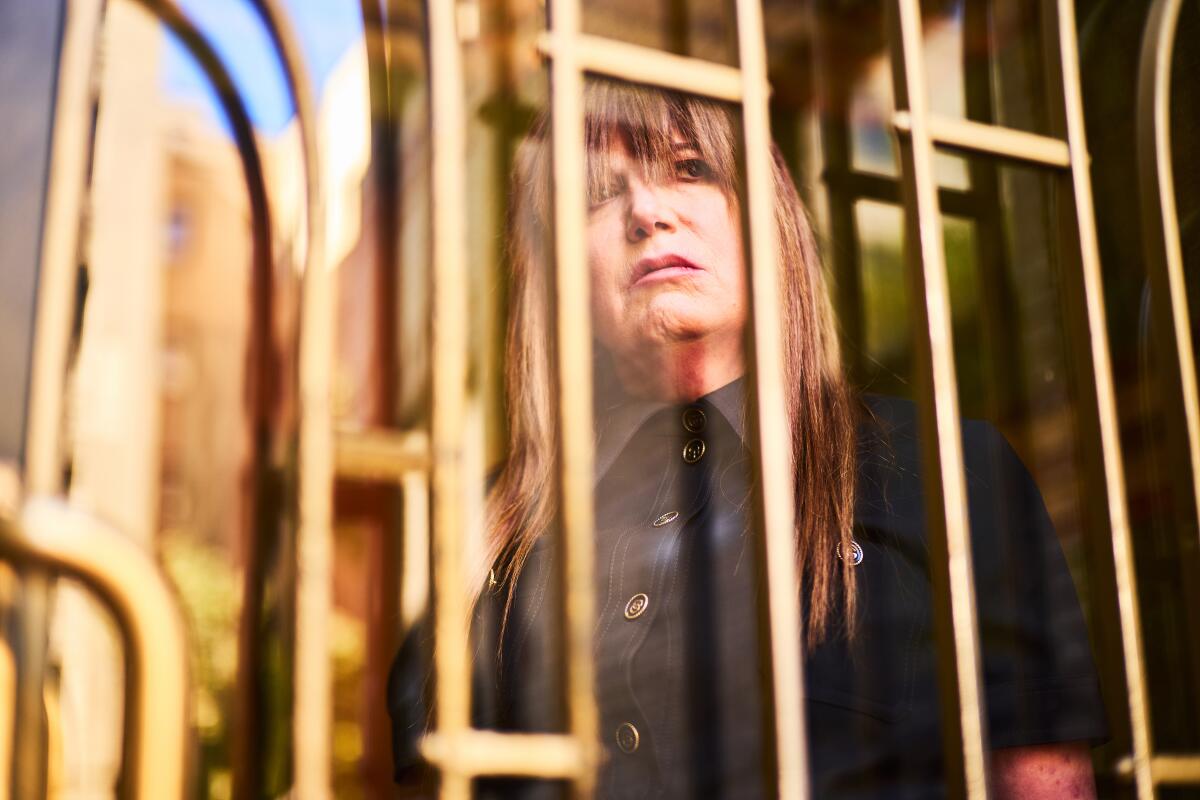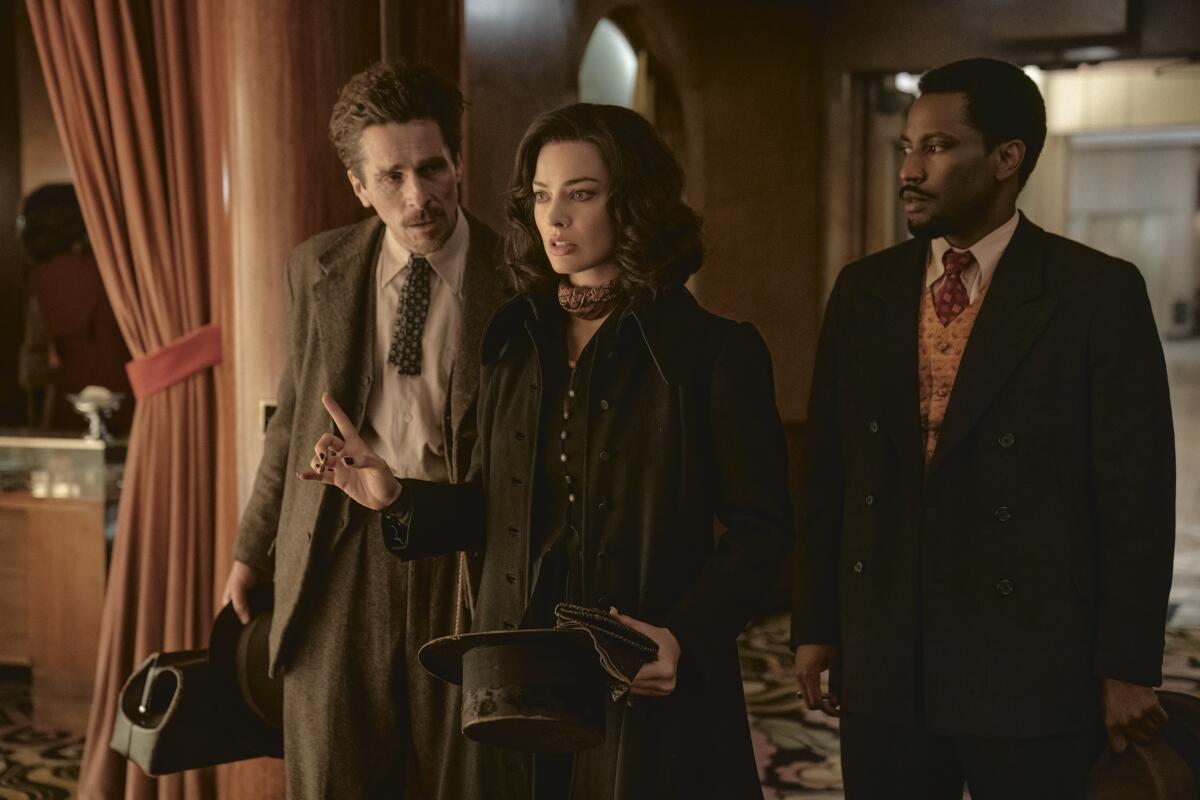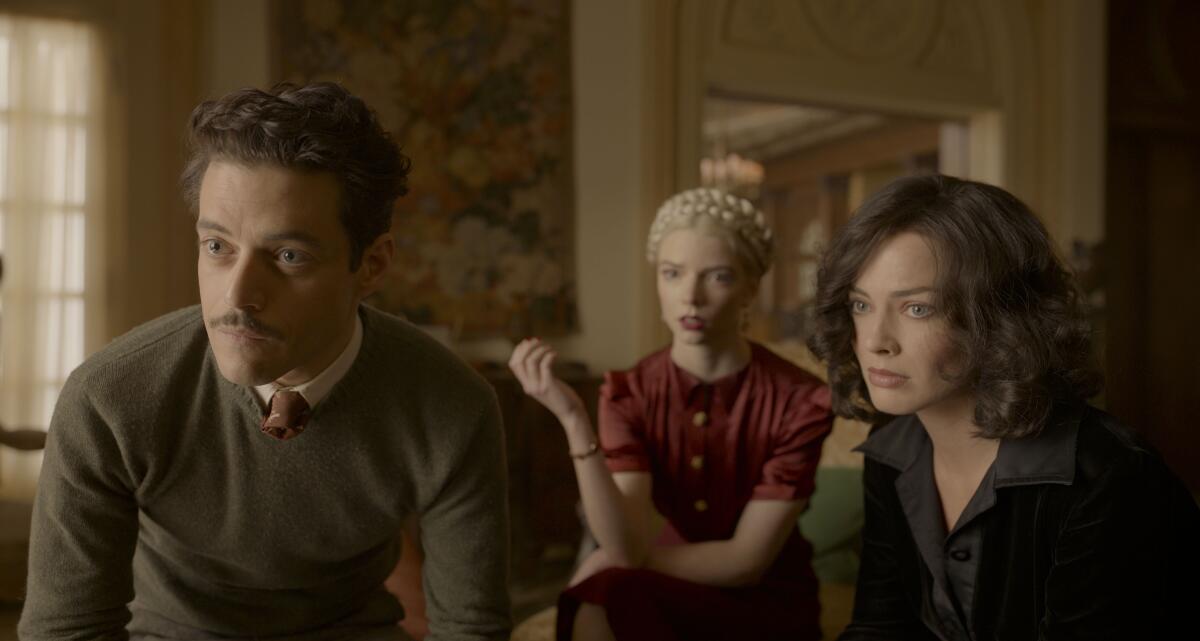L.A., churches and gardens ā it all works into the look of āAmsterdamā

By her fifth go-round working with writer-director David O. Russell, production designer Judy Becker has come to understand when the auteur knows exactly how he wants a set to look and when he might need a little visual guidance from her.
āWe do have a shorthand,ā Becker says. āI know what David needs to visualize a set, and I show him materials in a way that allows him to do it. Heās interested in color palettes, but heās most interested in actors and their movement. He usually has a big cast with a lot of people in the room at one time, so Iāve learned, depending on budget and crew, the different ways to show him the capacity for this to be the set.ā
But sometimes the director behind Octoberās āAmsterdam,ā a comic thriller starring Christian Bale, Margot Robbie and John David Washington, has a precise vision.
āVisual details heās attached to heāll put in the script. I can usually tell which ones as I know him so well, and when he puts something very detailed into the script, that means heās very attached to it,ā says Becker.
For the story warning of the rise of fascism set largely in 1933, for example, Russell was very specific with some elements.
āThe shrapnel-covered teapot, the hairbrush and the mirror ā those were all scripted in. He was really into all that. The art made from the fragments of war was a big theme for him. It took a lot of work, and a lot happened before we got what felt right artistically and felt right for that scene. A lot ended up not being in the movie, which often happens.ā

People sometimes forget what filmgoers see on the screen (minus the actors and costumes) ā everything else visual is what you do. Can you give us a sense of how many people work under you and what sort of divisions there are?
Iām head of the art department and also set dressing. I also work closely with the prop master and the location manager.
Thatās a lot.
It is a lot. Itās a leader of a big team. Under me I have an art director, then draftsmen, and production coordinator and the paint department and graphic designer. The set decorator is my most important hire, and she has a big team ā so altogether I can have 100 people. Itās like running a little artistic army.
Thereās so much going on plot-wise with this movie, so many opportunities to plant little set secrets. Did you partake?
I donāt recall how many made it in the movie, but I did plant them: swastikas everywhere as a sign of what was lying underneath everything. We had them in [Baleās] office tiles, but they looked too crazy; and in [Robbieās] office there are some really beautiful burgundy-and-black Art Deco chairs we purchased because it was reminiscent of a swastika design. Things like that.
COVID was a big tangle for this film. There were separate preps for two locations, yes?
We went to Boston originally, which was great since Iāve filmed there with David several times and know all the places that can pass for New York period. Then suddenly we were shut down: āYou need to go home, tomorrow.ā We hadnāt started filming yet, we were still in preproduction. But the film was always going to come back. We ended up for various reasons shooting in Los Angeles. I donāt think it was ideal, but it worked. There were not that many exteriors [in the film], which is where I think [filming in L.A.] shows, and a lot of it is at night, so it ended up being fine.

I noticed there were a lot of Los Angeles landmarks used in the film. The Queen Mary, for instance, was used for the Waldorf Astoriaās interiors; Palace Theatre downtown was used for the veteransā gala theater. And the New York and Chicago backlots at Paramount to shoot the New York exteriors.
Yes, and using backlots always strikes fear in the hearts of production designers, but this worked out. I did love the freedom we had to paint and play with the signage and dressing all the buildings, which you wouldnāt get in the real world.
You also filmed at First Baptist Church Pasadena, and interiors of the mansion Robbieās Valerie Voze shares with her family were shot at L.A.ās Peace Awareness Labyrinth & Gardens.
The interiors of Valerieās Amsterdam apartment were shot at the church. Iād never seen or used this location before. Little had been done to the building, so it really looked period. We shot there a lot. And the gardens, Iāve shot there before. We were looking for the Voze mansion and having trouble finding an exterior and interior to match, as most wealthy estate-type people heavily renovate their interiors and look more McMansion inside. The exterior was a house in Pasadena.
How closely did you work with the costume designers? There were two designers on the project, correct?
I worked mostly with [veteran costume designer Albert Wolsky]. It is tough to do visuals on Zoom, but we worked with palette, swatches, samples and paint samples. This and location scouting are always the things I start with, in terms of practical things. And a good costume designer ā and Iāve worked with some great ones ā always works it out. They know what the palette is, they know the look, and weāre all working on the same page with the same director. We do our own thing, but weāre always on the same page.
More to Read
From the Oscars to the Emmys.
Get the Envelope newsletter for exclusive awards season coverage, behind-the-scenes stories from the Envelope podcast and columnist Glenn Whippās must-read analysis.
You may occasionally receive promotional content from the Los Angeles Times.










